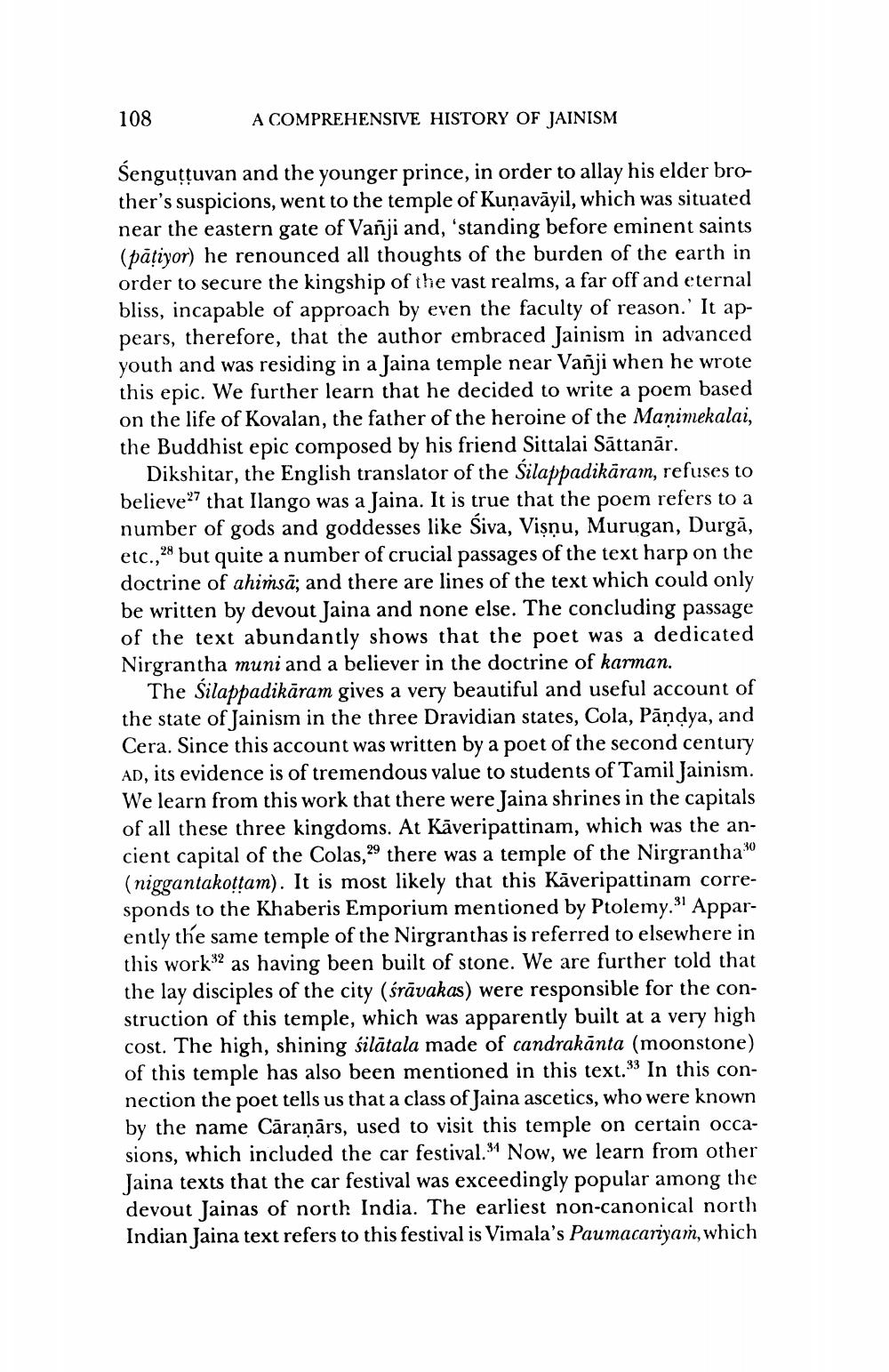________________
108
A COMPREHENSIVE HISTORY OF JAINISM
Senguțțuvan and the younger prince, in order to allay his elder brother's suspicions, went to the temple of Kuņavāyil, which was situated near the eastern gate of Vanji and, 'standing before eminent saints (pātiyor) he renounced all thoughts of the burden of the earth in order to secure the kingship of the vast realms, a far off and eternal bliss, incapable of approach by even the faculty of reason.' It appears, therefore, that the author embraced Jainism in advanced youth and was residing in a Jaina temple near Vañji when he wrote this epic. We further learn that he decided to write a poem based on the life of Kovalan, the father of the heroine of the Manimekalai, the Buddhist epic composed by his friend Sittalai Sáttanār.
Dikshitar, the English translator of the Silappadikāram, refuses to believe that Ilango was a Jaina. It is true that the poem refers to a number of gods and goddesses like Śiva, Visņu, Murugan, Durgā, etc.,28 but quite a number of crucial passages of the text harp on the doctrine of ahimsā; and there are lines of the text which could only be written by devout Jaina and none else. The concluding passage of the text abundantly shows that the poet was a dedicated Nirgrantha muni and a believer in the doctrine of karman.
The Silappadikāram gives a very beautiful and useful account of the state of Jainism in the three Dravidian states, Cola, Pāņdya, and Cera. Since this account was written by a poet of the second century AD, its evidence is of tremendous value to students of Tamil Jainism. We learn from this work that there were Jaina shrines in the capitals of all these three kingdoms. At Kaveripattinam, which was the ancient capital of the Colas,29 there was a temple of the Nirgrantha." (niggantakottam). It is most likely that this Kāveripattinam corresponds to the Khaberis Emporium mentioned by Ptolemy. 31 Apparently the same temple of the Nirgranthas is referred to elsewhere in this works as having been built of stone. We are further told that the lay disciples of the city (śrāvakas) were responsible for the construction of this temple, which was apparently built at a very high cost. The high, shining silätala made of candrakanta (moonstone) of this temple has also been mentioned in this text.” In this connection the poet tells us that a class of Jaina ascetics, who were known by the name Cāraṇārs, used to visit this temple on certain occasions, which included the car festival.94 Now, we learn from other Jaina texts that the car festival was exceedingly popular among the devout Jainas of north India. The earliest non-canonical north Indian Jaina text refers to this festival is Vimala's Paumacariyam, which




